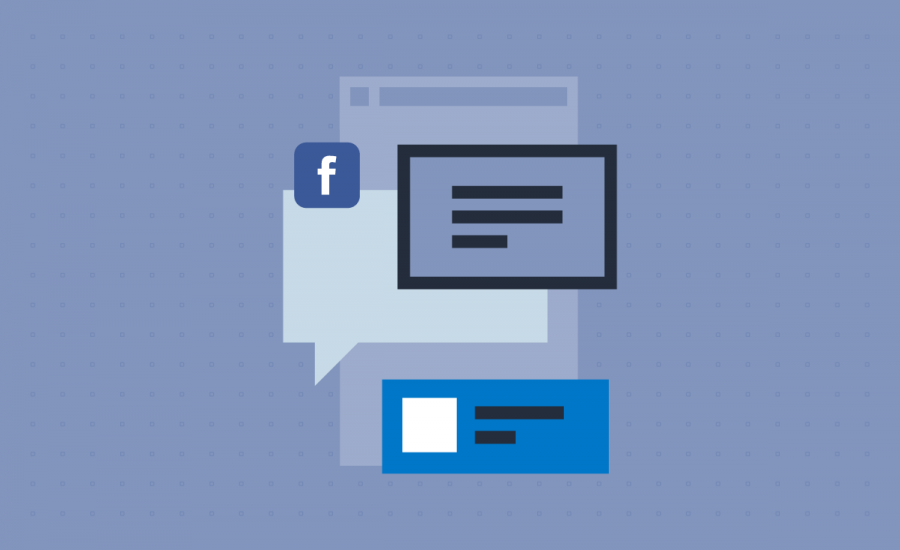You’ve checked and rechecked your punctuation and your grammar. You’ve read it backward and forward. It’s perfect. Time to make your masterpiece public.
But wait! Before you hit publish, have you considered how to boost your blog’s performance on Facebook? The quickest way to reach out to your internet audience is through social media. You can do this either organically or through paid advertising. Both have their merits, but if you are trying to accrue a following, it’s to your benefit to at least look into some of Facebook’s paid advertising offers.
Paid advertising allows you to directly target your intended audience, get your updates seen and drive traffic to your blog site.
Increase Blog Traffic with Facebook Ads and Boosted Posts
There are two paths from which to choose: Boosted Posts and Facebook Ads.
Boosted posts
Boosted Posts are an effective way to reach people who have already liked your page and to acquire new followers. A boosted post appears in the user’s newsfeed and can take several forms — status updates, blog posts, videos and events.
You can boost a post when you create it or anytime after it’s been published. Many people choose to boost a post after it has gained traction organically and outperforms other posts made by you. With a Boosted Post, you pay for the engagement on the post (likes, comments, shares, etc.)
Boosted posts are given priority over other posts, appearing higher on the feed for increased user discovery. Posts are boosted directly from your Facebook page. First, find the post you want to promote and then select the “boost post” button (directly below and to the right of the post.)
Next, determine who should see your post. You have several targeting options when boosting a post: people who like your page, people who like your page and their friends or people you select through targeting.
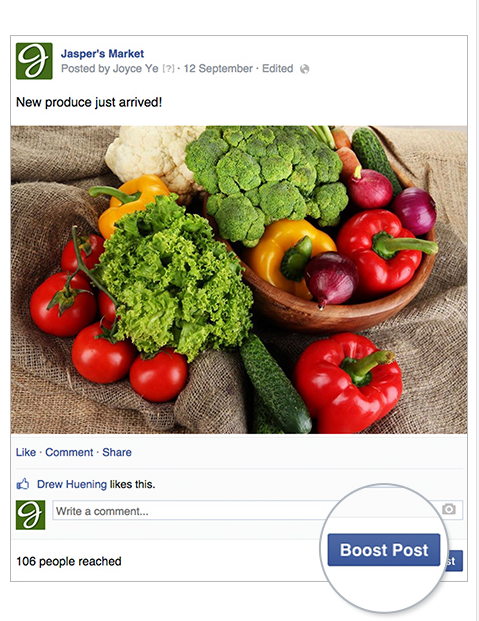
Let’s break down each option:
- People who like your page: many businesses did a poor job of initially attracting high-quality page likes. We tag our friends, many of whom have no idea what the page is about, and ask them to “like” our page. Our friends like the page because they ‘like’ us, not our product. Save your money for people who are really interested in your content.
- People who like your page and their friends: As with option No. 1, this choice is also best skipped as friends of your friends probably find your content irrelevant too.
- People you select through targeting: The targeting option lets you select the type of people you want to reach based on their location, age, gender and up to 10 interests. Your custom audience can be saved for future use or you can redefine your parameters next time you boost. This option is the best value for your money.
Facebook offers several options for both payment and boost run. As shown by the below screenshot, Facebook recommends spending an average of $30 but the amount paid can be as little as $10. However, a lower budget means fewer people are likely to see it. You also have the option to define your own budget. To learn more about your budget options, visit Facebook’s business page to know more about setting a budget and your payment options.
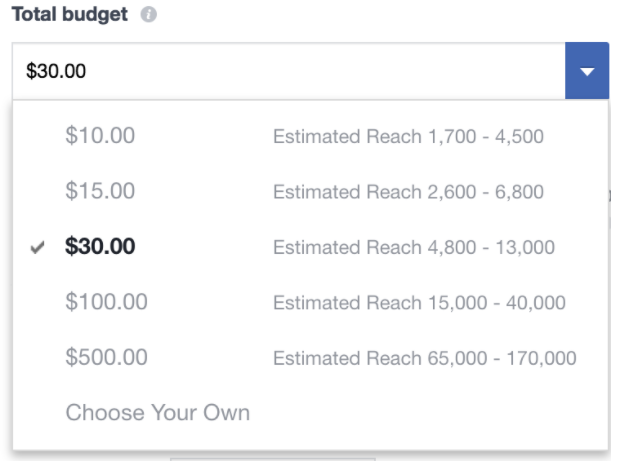
Once you have chosen your budget, you will need to choose a run time for your campaign. Boosted posts can run anywhere from one to fourteen days, or you can set a custom end date for your campaign. Facebook sums up your budget and duration decisions for you, plus an estimate of the post’s estimated reach. Take the time to experiment with different payment levels and run time to learn how each choice affects post reach. Then, select the terms which make the most sense for your budget and campaign goals.
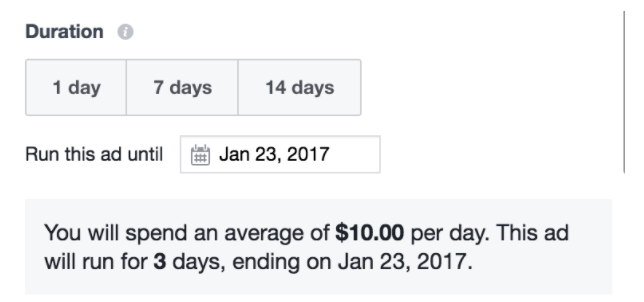
Facebook ads
Facebook Ads are considerably different from a boosted post. First, where Boosted Posts take the form of Facebook content and live in the user’s newsfeed, Facebook Ads offer several placement options, such as Desktop and Mobile Feed, Right Column, Instant Articles, In-Stream Video, Instagram and Audience Networks. With Facebook Ads, you choose whether to run your ads across all of the eligible placements or to manually select ad placement during your ad set-up.
Additionally, Facebook Ads allow for specific targeting on a granular level and offers several marketing tools to help you meet your business objectives.
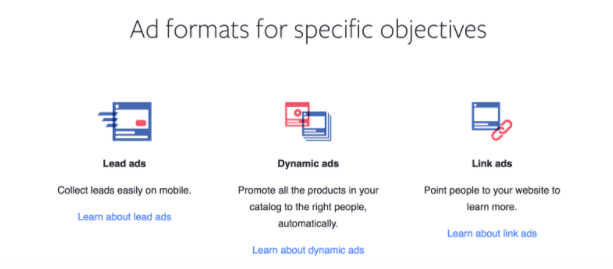
For blog promotion, we recommend Facebook’s Link ads format to direct interested users to your chosen content. The entire ad is clickable, so it doesn’t matter whether the user clicks on the text or the image; they will be taken to your web page.
Once you have selected “link ads,” you are directed to the first of three set-up pages, the Campaign. On this page, you can choose from several marketing objectives, such as awareness, consideration or conversion. For blog clicks, select “send people to a destination on or off Facebook.”
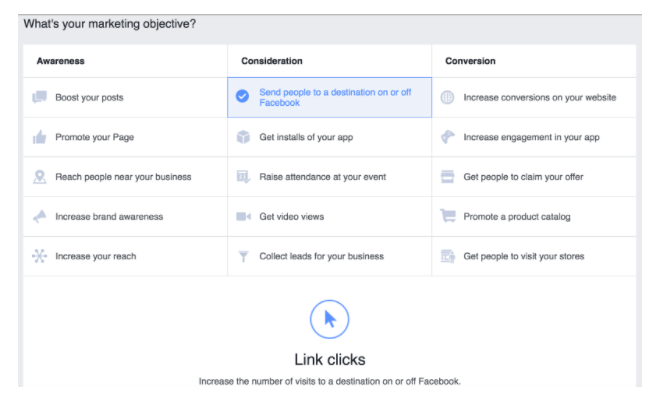
When someone clicks on your ad, they will be taken to the destination of your choice, which for this objective should be the content of your blog post.
Once you have selected your marketing objective, you will be taken to “ad set” to define your audience, set your budget and determine ad delivery schedule.
Want to know more? View the types of Facebook ads.
Define audience
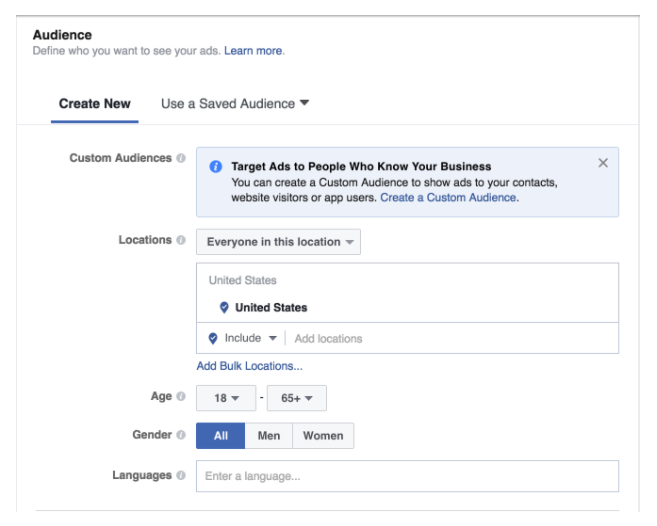
For this step, you need to either create a new audience or use a previously saved one. To create a new audience, first complete the basic demographics, age, gender, language and location.
The next step is to define your ad placement.

Facebook recommends automatic placement, as they believe this allows them to get you the best results at the lowest price. You can choose to remove placements, but it depends on your blog content–choose the placement that best fits your topic.
Finally, you need to set your budget and schedule. Facebook sets a minimum budget according to whether you’re using automatic or manual bidding. According to Facebook’s Ads Manager, the minimum for ads set in U.S. dollars is:
- For impression ad sets, the daily budget must be at least $1 a day
- For click ad sets, the daily budget must be at least $5 a day
- For event ad sets like offer claims or app installs, the daily budget must be at least $40 a day

Advanced options reveal the following choices: optimization for ad delivery (link clicks or impressions), automatic or manual bidding, when you get charged (CPC or per impression), to run ads all the time or on a schedule, and either a standard or accelerated delivery schedule.
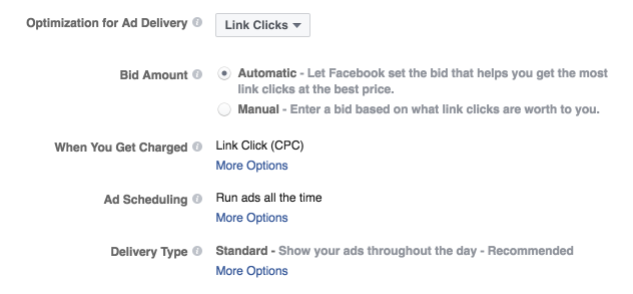
Finally, you can choose your ad format and select your links and related Facebook page. To learn more about Facebook ad options, read the article Know your options: all the types of Facebook ads and Facebook Ads Manager.
Putting it all together
As you can see, Facebook Ads Manager offers more opportunities to customize and optimize your ad set over Boosted Posts. Choose your advertising format based on your budget, objectives and level of expertise. If this is your first time advertising on Facebook, you can always decide to ease into the platform to see how it all flows together. Whatever you decide, don’t be afraid to put yourself and your blog post out there; it’s the only way to grow both yourself and your following.
Ready to get started? View the options for Facebook ad sizes.


